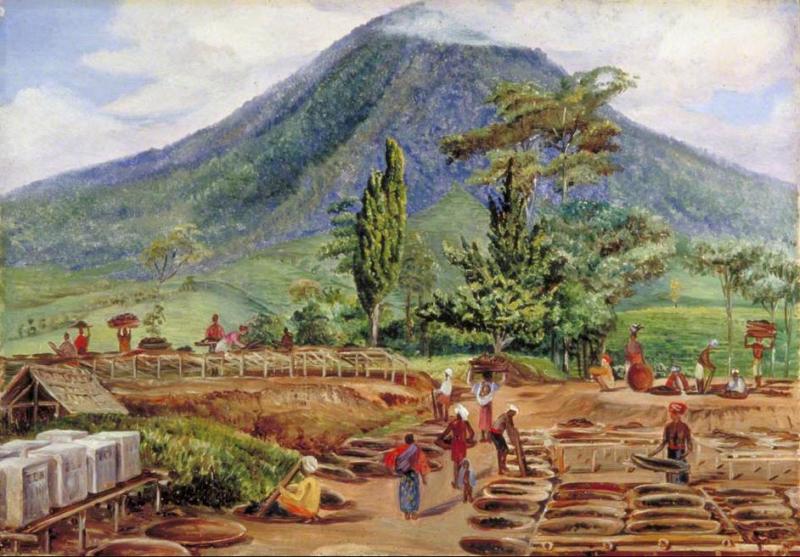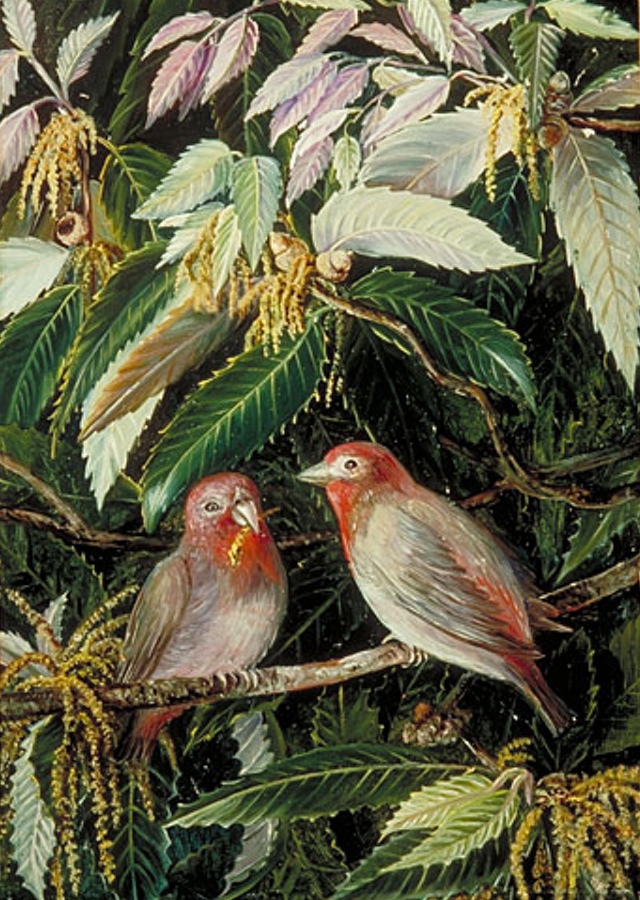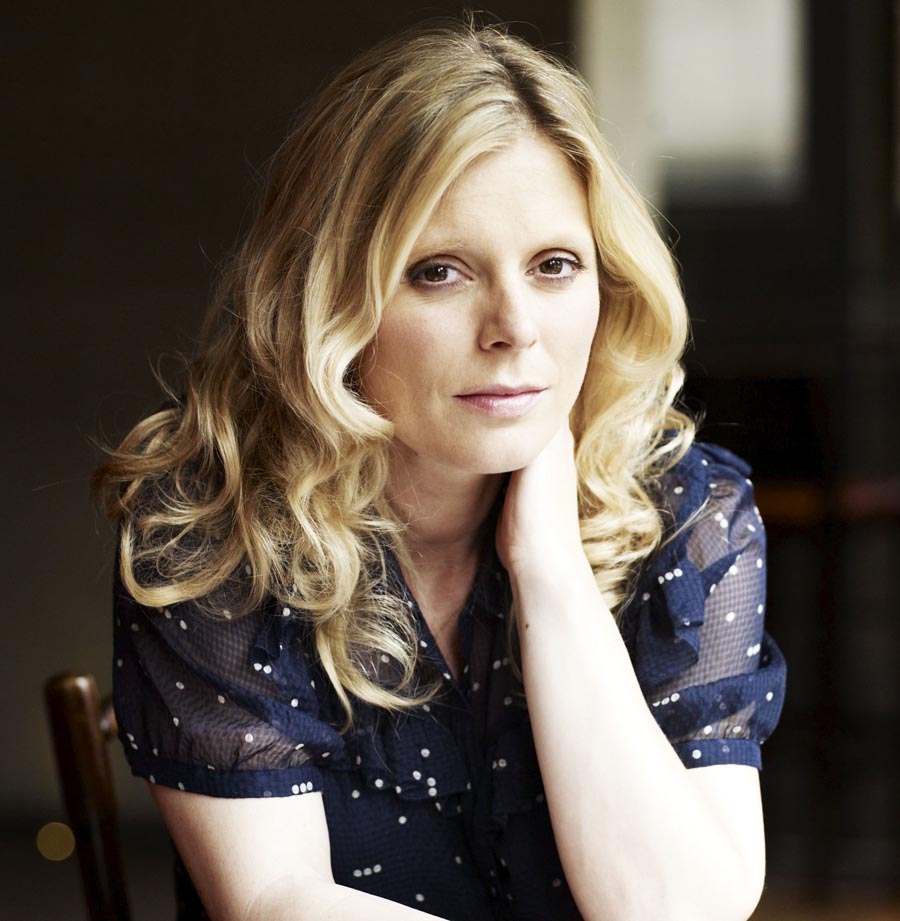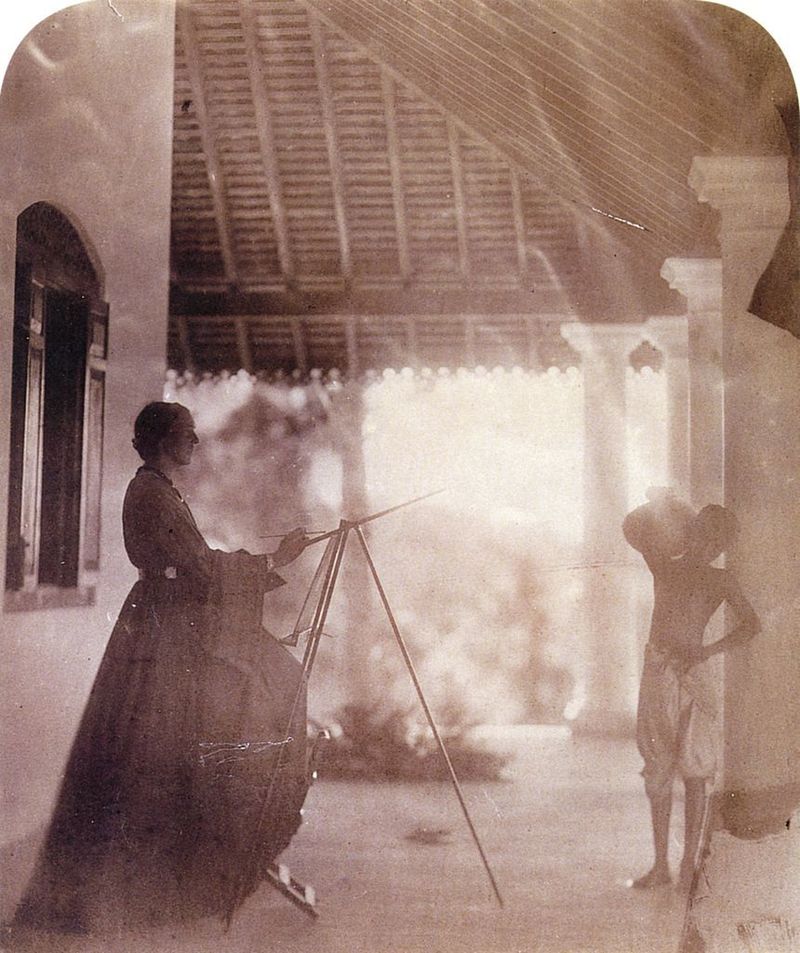Kew's Forgotten Queen, BBC Four | reviews, news & interviews
Kew's Forgotten Queen, BBC Four
Kew's Forgotten Queen, BBC Four
How Marianne North mastered the art of capturing nature

The indefatigable Victorian spinster Marianne North (1830-1890) is the most interesting artist you've never heard of. The upper-middle-class Ms North thought marriage a terrible experiment, and with her single state allowing her control of her fortune, she took to cultural and physical independence. Her rich landowner father, Frederick, MP for Hastings, knew everyone who was everyone, including Sir William Hooker, director of Kew.
It was a visit to the gardens that turned his daughter’s eyes to the world of plants. She was 25 and had found her vocation. Marianne deserted the drawing room and went on to make 1000 paintings worldwide, drawn from life. She managed extensive visits to 17 countries on five continents, from the Seychelles to Chile, Canada to Jamaica (North's Himalayan Oak and Birds, Nainee Tal, India, pictured below).
 She spent a year in Australia specifically on the suggestion of Darwin. She painted 200 paintings in India, 300 in Australia, and gave 832 works to Kew. Their scientific, let alone aesthetic, value, in the time before colour photography, remains high. Dried specimens fade, oil paints survive.
She spent a year in Australia specifically on the suggestion of Darwin. She painted 200 paintings in India, 300 in Australia, and gave 832 works to Kew. Their scientific, let alone aesthetic, value, in the time before colour photography, remains high. Dried specimens fade, oil paints survive.
This gorgeous film, where we were guided by an enthusiasm heavily spattered with cries of astonishment by the actress Emilia Fox (pictured below left), with commentary from curators, scholars and historians, took us from Hastings to London to Kew to Borneo. It was punctuated by photographs of Marianne in full Victorian regalia, huge dresses, mobcap and all, which made her travels through jungle and forest even more amazing. Her rule was evidently that she always had to see her feet, presumably to avoid sinking through mud and swamp.
She declared that if you only observe what nature teaches you will find a new happiness in life. This precept was the guiding light of her obsession, and obsessed she was. And as a true Victorian she wrote endless letters, and even an autobiography. She also scathingly observed that man’s civilising influence could destroy in a few years what nature and animals had preserved for millennia.
 Ms Fox’s river journeys and hikes up mountains in the steamy heat of Sarawak (her makeup remaining impeccable throughout) indicated just some of the physical endurance that Ms North needed. Here our artist had been determined to find the carnivorous pitcher plant, and succeeded to such an extent that several unknown species now have suffixes from Northiana to Northiam.
Ms Fox’s river journeys and hikes up mountains in the steamy heat of Sarawak (her makeup remaining impeccable throughout) indicated just some of the physical endurance that Ms North needed. Here our artist had been determined to find the carnivorous pitcher plant, and succeeded to such an extent that several unknown species now have suffixes from Northiana to Northiam.
But there was a heavy price: Marianne was dead at 59 after episodes of broken bones, influenza, typhoid and rheumatic fever had taken their toll. She travelled alone it was said, but surely not; there must have been servants along the way, and mention was made of porters carrying her equipment. How she kept enough supplies of oil paint, canvas and so on throughout her trips of months, even years at a time remained mysterious to this viewer.
What did ease her passage – and we saw the documents that did so – was that effective precursor of the social network, the upper middle classes that ruled the Empire: the formal letters of introduction to ambassadors, high commissioners and the like. We saw wonderful photographs of those bearded and moustachioed Victorian males who dominated science. The commentary threw intriguing facts around like confetti; the Royal Society only admitted its first female member in 1945, a mere 55 years after Ms North’s death (North painting a Tamil boy in Ceylon, 1877, below).

After Kew accepted her paintings, she masterminded the red-brick, purpose-built gallery in the gardens dedicated to her work – she paid for it and supervised its construction – and it's the only museum in Britain still showing exclusively the art of a single woman. Single she was on every level: singular, and in spite of many a suitor, defiantly single when marriage was the only career available to women.
Her mission was to reach as many people as possible with her fully fleshed out scenes of flora and fauna in native habitats. Not for Ms North the careful rendering of a plant specimen on an expanse of white paper; her paintings put her plants (and animals) in the vivid landscapes that they naturally inhabited. We ended with a visit to her picture-jammed gallery, the paintings wall to ceiling. Its curator showed us the artist’s own diagrammatic plan for the installation of her work. She lobbied for a café to serve tea and coffee to visitors, but was denied, even after the issue went to Downing Street and parliament. She was of course as undaunted as ever. A final view showed us the colourful frieze depicting tea and coffee plants that Ms North painted in lieu of that café. This total wonderwoman even had a sense of humour.
Add comment
The future of Arts Journalism
You can stop theartsdesk.com closing!
We urgently need financing to survive. Our fundraising drive has thus far raised £49,000 but we need to reach £100,000 or we will be forced to close. Please contribute here: https://gofund.me/c3f6033d
And if you can forward this information to anyone who might assist, we’d be grateful.

Subscribe to theartsdesk.com
Thank you for continuing to read our work on theartsdesk.com. For unlimited access to every article in its entirety, including our archive of more than 15,000 pieces, we're asking for £5 per month or £40 per year. We feel it's a very good deal, and hope you do too.
To take a subscription now simply click here.
And if you're looking for that extra gift for a friend or family member, why not treat them to a theartsdesk.com gift subscription?
more TV
 Murder Before Evensong, Acorn TV review - death comes to the picturesque village of Champton
The Rev Richard Coles's sleuthing cleric hits the screen
Murder Before Evensong, Acorn TV review - death comes to the picturesque village of Champton
The Rev Richard Coles's sleuthing cleric hits the screen
 Black Rabbit, Netflix review - grime and punishment in New York City
Jude Law and Jason Bateman tread the thin line between love and hate
Black Rabbit, Netflix review - grime and punishment in New York City
Jude Law and Jason Bateman tread the thin line between love and hate
 The Hack, ITV review - plodding anatomy of twin UK scandals
Jack Thorne's skill can't disguise the bagginess of his double-headed material
The Hack, ITV review - plodding anatomy of twin UK scandals
Jack Thorne's skill can't disguise the bagginess of his double-headed material
 Slow Horses, Series 5, Apple TV+ review - terror, trauma and impeccable comic timing
Jackson Lamb's band of MI5 misfits continues to fascinate and amuse
Slow Horses, Series 5, Apple TV+ review - terror, trauma and impeccable comic timing
Jackson Lamb's band of MI5 misfits continues to fascinate and amuse
 Coldwater, ITV1 review - horror and black comedy in the Highlands
Superb cast lights up David Ireland's cunning thriller
Coldwater, ITV1 review - horror and black comedy in the Highlands
Superb cast lights up David Ireland's cunning thriller
 Blu-ray: The Sweeney - Series One
Influential and entertaining 1970s police drama, handsomely restored
Blu-ray: The Sweeney - Series One
Influential and entertaining 1970s police drama, handsomely restored
 I Fought the Law, ITVX review - how an 800-year-old law was challenged and changed
Sheridan Smith's raw performance dominates ITV's new docudrama about injustice
I Fought the Law, ITVX review - how an 800-year-old law was challenged and changed
Sheridan Smith's raw performance dominates ITV's new docudrama about injustice
 The Paper, Sky Max review - a spinoff of the US Office worth waiting 20 years for
Perfectly judged recycling of the original's key elements, with a star turn at its heart
The Paper, Sky Max review - a spinoff of the US Office worth waiting 20 years for
Perfectly judged recycling of the original's key elements, with a star turn at its heart
 The Guest, BBC One review - be careful what you wish for
A terrific Eve Myles stars in addictive Welsh mystery
The Guest, BBC One review - be careful what you wish for
A terrific Eve Myles stars in addictive Welsh mystery
 theartsdesk Q&A: Suranne Jones on 'Hostage', power pants and politics
The star and producer talks about taking on the role of Prime Minister, wearing high heels and living in the public eye
theartsdesk Q&A: Suranne Jones on 'Hostage', power pants and politics
The star and producer talks about taking on the role of Prime Minister, wearing high heels and living in the public eye
 King & Conqueror, BBC One review - not many kicks in 1066
Turgid medieval drama leaves viewers in the dark
King & Conqueror, BBC One review - not many kicks in 1066
Turgid medieval drama leaves viewers in the dark
 Hostage, Netflix review - entente not-too-cordiale
Suranne Jones and Julie Delpy cross swords in confused political drama
Hostage, Netflix review - entente not-too-cordiale
Suranne Jones and Julie Delpy cross swords in confused political drama

Comments
Garden lovers all know
Garden lovers all know Marianne North well, and the gallery at Kew had a huge impact on me as a kid. As your review implies, it's the history and the botanical study which make her so interesting, not the quality of the painting.
Why, towards the end of this
Why, towards the end of this essay, does the reviewer start referring to Marianne North as Marianne Thornton? Is she confusing her with E.M. Forster's great-aunt?
Thank you for drawing our
Thank you for drawing our attention, now amended. Perhaps the writer will confirm whether she was indeed thinking inadvertently of an EM Forster relation...
Ah, I see The Arts Desk has
Ah, I see The Arts Desk has now corrected the erroneous instances of "Thornton" to the correct "North"s. You're welcome!
The programme was tosh, the
The programme was tosh, the presenter laughable in her attempts to out-do Joanna Lumley, the paintings glorious. Emilia Fox's intrepid jungle trekking has to be taken with a very large pinch of salt - "impeccable make-up" and not a hint of anything so vulgar as perspiration!.
Anyone who has lived in
Anyone who has lived in Sarawak will know it is not pronounced SARAWACK !! Not sure Emelia Fox right person to portray such a lady.